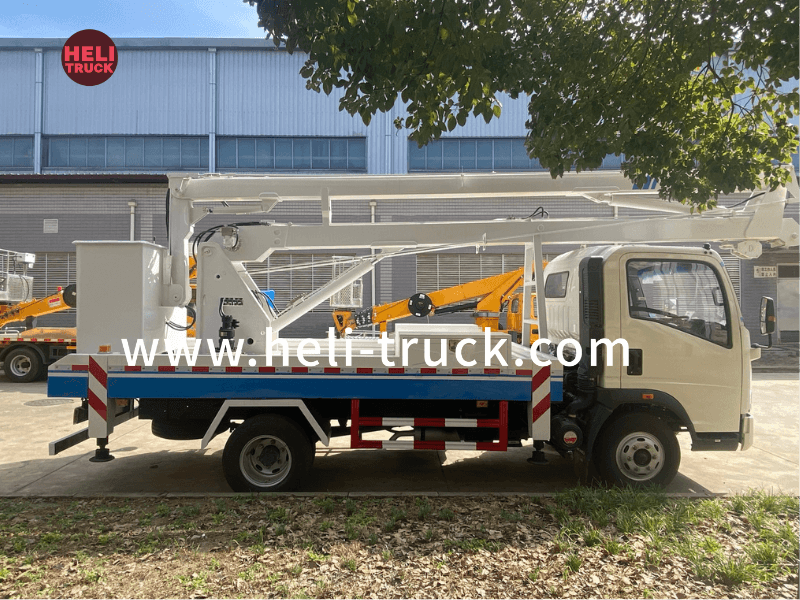Introduction
Garbage compactor trucks play a crucial role in the efficient and safe management of waste, especially hazardous materials. These specialized vehicles are designed to collect, transport, and compact various types of waste, including hazardous substances, to minimize environmental impact and ensure public safety. In this comprehensive article, we will explore the importance of garbage compactor trucks for handling hazardous materials, their key features, operational processes, safety considerations, and the role they play in sustainable waste management practices.
Importance of Garbage Compactor Trucks for Hazardous Materials Management
Hazardous waste poses significant risks to human health and the environment if not managed properly. From industrial by-products to household chemicals, hazardous materials require specialized handling and disposal to prevent contamination and pollution. Garbage compactor trucks are essential tools in managing hazardous waste efficiently and safely.
These trucks are equipped with features such as sealed compartments, leak-proof containers, and advanced filtration systems to contain and transport hazardous materials securely. By compacting the waste, garbage compactor trucks can transport larger quantities of hazardous materials in a single trip, reducing the number of vehicles on the road and minimizing the overall environmental footprint of waste transportation.
Operational Processes of Garbage Compactor Trucks for Hazardous Materials
Garbage compactor trucks for hazardous materials follow a systematic operational process to ensure the proper collection, transportation, and disposal of waste. The following are the key steps involved in the operation of these specialized vehicles:
1. Waste Collection: Garbage compactor trucks are dispatched to designated collection points where hazardous materials are stored. Trained personnel carefully load the waste into the truck's compartments, ensuring that all safety protocols are followed to prevent spills or leaks.
2. Compaction: Once the waste is loaded, the compaction process begins. The truck's compactor mechanism compresses the waste, reducing its volume and maximizing the truck's capacity. This step is crucial for efficient waste transportation and disposal.

3. Transportation: After compaction, the garbage compactor truck transports the hazardous materials to designated disposal facilities. During transit, the sealed compartments and containment systems of the truck ensure that no leaks or spills occur, minimizing the risk of environmental contamination.
4. Disposal: Upon reaching the disposal facility, the hazardous waste is unloaded and processed according to regulatory guidelines. Garbage compactor trucks play a vital role in facilitating the safe and compliant disposal of hazardous materials, protecting both public health and the environment.
Key Features of Garbage Compactor Trucks for Hazardous Materials
Garbage compactor trucks designed for hazardous materials management are equipped with a range of features that enhance their safety, efficiency, and environmental performance. Some of the key features of these specialized vehicles include:
1. Sealed Compartments: Garbage compactor trucks have sealed compartments to contain hazardous materials securely during transportation. These compartments prevent leaks, spills, and emissions, reducing the risk of environmental contamination.
2. Leak-Proof Containers: Hazardous waste is stored in leak-proof containers within the truck's compartments to further minimize the risk of spills or exposure. These containers are designed to withstand the corrosive nature of many hazardous materials.
3. Advanced Filtration Systems: Garbage compactor trucks are equipped with advanced filtration systems to capture and neutralize harmful emissions and odors generated during waste compaction and transportation. These systems help mitigate air pollution and protect the health of workers and the public.
4. Monitoring and Control Systems: Modern garbage compactor trucks feature monitoring and control systems that allow operators to track waste levels, monitor compaction processes, and ensure compliance with safety regulations. garbage truck manufacturers enhance operational efficiency and safety.
Safety Considerations in Garbage Compactor Trucks for Hazardous Materials
Safety is a top priority in the operation of garbage compactor trucks for hazardous materials. To ensure the protection of workers, the public, and the environment, several safety considerations must be taken into account:
1. Personal Protective Equipment (PPE): Workers involved in loading, unloading, and operating garbage compactor trucks must wear appropriate PPE, including gloves, goggles, masks, and protective clothing, to prevent exposure to hazardous materials.
2. Training and Certification: Operators of garbage compactor trucks should undergo comprehensive training on hazardous materials handling, waste management protocols, and emergency procedures. Certification programs ensure that operators are proficient in safe operating practices.
3. Emergency Response Plans: Garbage compactor truck operators must be trained in emergency response procedures in case of accidents, spills, or other hazardous incidents. Having well-defined response plans helps minimize risks and mitigate potential harm.
4. Regulatory Compliance: Garbage compactor trucks must comply with local, state, and federal regulations governing the transportation and disposal of hazardous materials. Adhering to regulatory requirements ensures that waste management operations are conducted safely and legally.
Role of Garbage Compactor Trucks in Sustainable Waste Management Practices
Garbage compactor trucks play a vital role in promoting sustainable waste management practices, particularly in the handling of hazardous materials. By compacting waste, these vehicles reduce the volume of waste requiring disposal, leading to fewer landfill contributions and lower transportation emissions. Additionally, the containment and secure transportation of hazardous materials by garbage compactor trucks help prevent environmental contamination and protect ecosystems.
Furthermore, garbage compactor trucks support circular economy principles by enabling the safe recovery and recycling of valuable resources from hazardous waste streams. Through proper waste segregation and management, these vehicles contribute to the efficient reuse and repurposing of materials, reducing the overall environmental impact of waste generation.
Conclusion
In conclusion, garbage compactor trucks are indispensable tools for the efficient and safe management of hazardous materials. These specialized vehicles play a crucial role in collecting, compacting, and transporting hazardous waste, ensuring compliance with regulations, protecting public health, and minimizing environmental impact. By incorporating advanced features, adhering to safety protocols, and promoting sustainable practices, garbage compactor trucks contribute to the advancement of waste management processes and support a cleaner, healthier environment for present and future generations.
